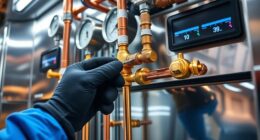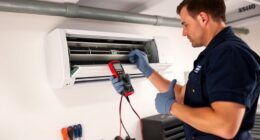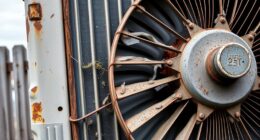Did you know that by optimizing temperature settings, performing regular maintenance, and insulating your home, you can increase your heat pump’s energy efficiency by up to 30%?
In this article, we’ll share the top techniques to help you save energy and money.
From utilizing programmable thermostats to supplementing with solar power, these tips will ensure your heat pump operates at its best.
Don’t miss out on these expert recommendations to make your home more energy-efficient.

Key Takeaways
- Utilize zoning systems and smart technology to schedule temperature adjustments based on daily routines and maximize energy efficiency.
- Regularly maintain and clean your heat pump, including inspecting and cleaning air filters, checking for refrigerant leaks, and lubricating motor and fan bearings.
- Insulate your home to reduce energy wastage and improve the efficiency of your heat pump, including sealing air leaks, installing insulation, and using double-glazed windows.
- Ensure proper airflow by keeping vents and registers unobstructed, cleaning or replacing air filters regularly, and using ceiling fans to improve air distribution.
Optimizing Temperature Settings
Let’s start by finding the optimal temperature settings to maximize our heat pump’s energy efficiency. With the advancement of smart technology, heat pumps are now equipped with features that allow for precise temperature control.
By utilizing zoning systems, we can divide our home into different areas and control the temperature independently in each zone. This means we can heat or cool only the areas that are occupied, reducing energy waste.
Smart technology also enables us to schedule temperature adjustments based on our daily routines, ensuring comfort when we need it and energy savings when we don’t.
It’s important to set the temperature at a moderate level, avoiding extreme highs or lows, as this can strain the heat pump and decrease overall efficiency.
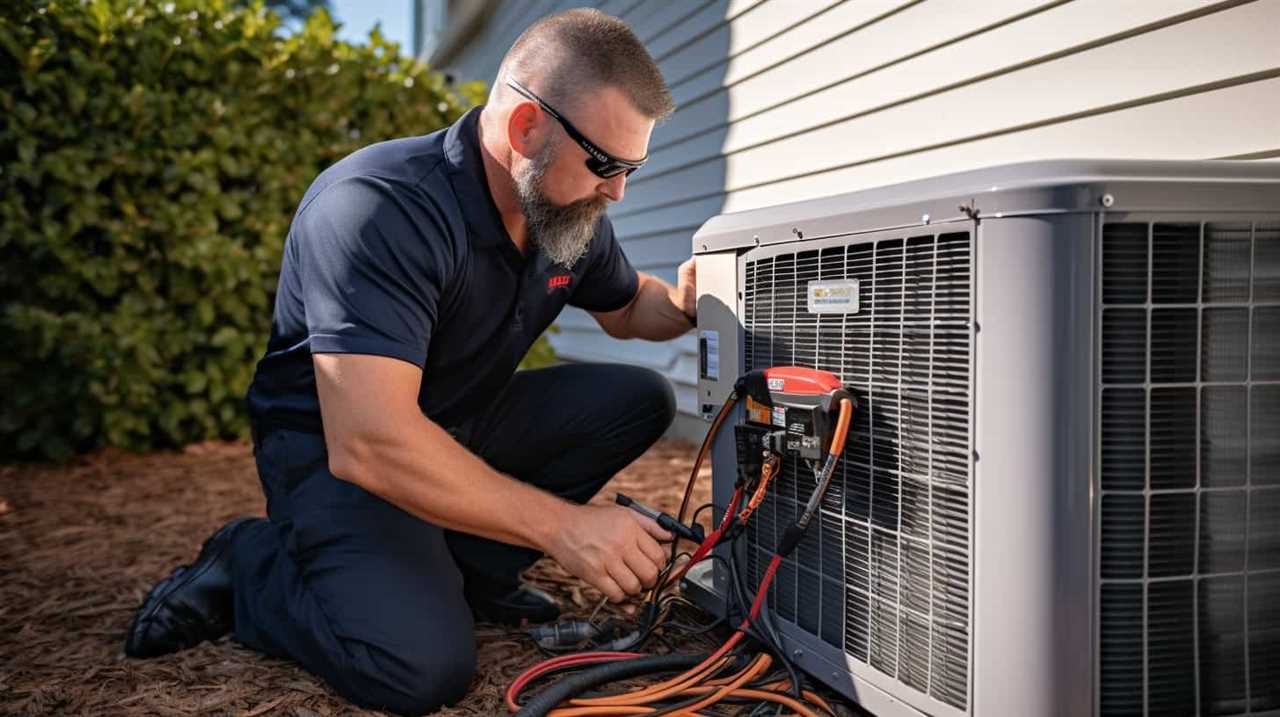
Regular Maintenance and Cleaning
To ensure optimal performance and energy efficiency, we need to regularly maintain and clean our heat pump. Following a maintenance checklist is essential for keeping our heat pump in top shape.
The maintenance checklist includes tasks such as inspecting and cleaning the air filters, checking for any refrigerant leaks, and lubricating the motor and fan bearings. Regular cleaning of the heat pump’s exterior is also necessary to remove dirt and debris that can hinder its efficiency.
When it comes to cleaning products, it’s important to use ones specifically designed for heat pumps to avoid damaging the unit. Using a soft brush or cloth and mild detergent is typically sufficient for cleaning the exterior surfaces.
Insulating Your Home
How can we effectively insulate our home and improve our heat pump’s energy efficiency? Insulating our home is an essential step towards reducing energy wastage and maximizing the efficiency of our heat pump. By using energy-saving materials and cost-effective insulation techniques, we can create a thermal barrier that prevents heat loss in the winter and heat gain in the summer. This not only helps to maintain a comfortable indoor temperature but also reduces the workload on our heat pump, leading to significant energy savings. Some commonly used insulation materials include fiberglass, cellulose, and spray foam. The choice of insulation material depends on factors such as cost, R-value, and moisture resistance. Properly insulating our home ensures that the conditioned air stays inside, resulting in improved energy efficiency and lower utility bills.
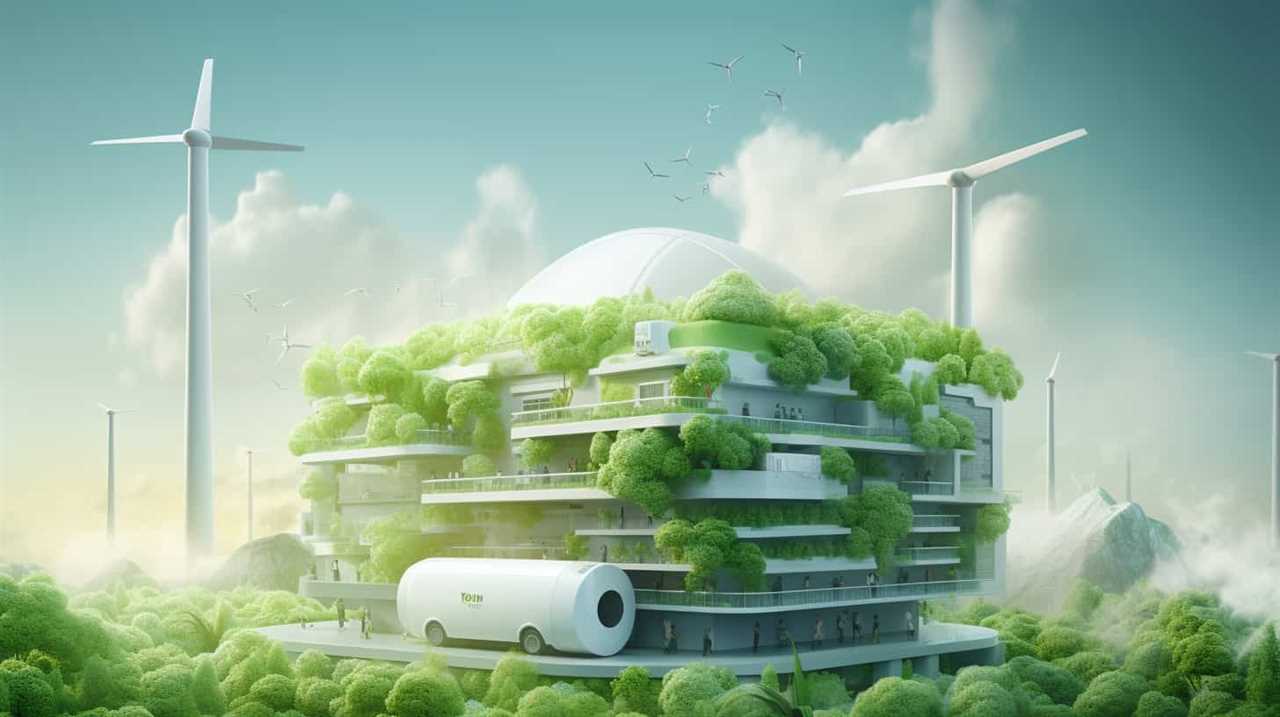
| Insulation Material | R-Value (per inch) |
|---|---|
| Fiberglass | 2.2 – 2.7 |
| Cellulose | 3.2 – 3.8 |
| Spray Foam | 6.0 – 6.5 |
| Reflective Foil | 1.0 – 2.0 |
Table: Common Insulation Materials and their R-Values per inch. Higher R-value indicates better insulation efficiency.
Utilizing Programmable Thermostats
We can maximize our heat pump’s energy efficiency by utilizing programmable thermostats and adjusting temperature settings based on our daily schedule. Programmable thermostats are smart technology devices that allow us to set different temperature levels for different times of the day. This feature helps us save energy by automatically adjusting the temperature when we aren’t at home or asleep.
Some programmable thermostats also come with energy saving features such as occupancy sensors, which detect when a room is unoccupied and adjust the temperature accordingly. By using these energy saving features, we can reduce our energy consumption and lower our heating and cooling costs.
It’s important to choose a programmable thermostat that’s compatible with our heat pump system and to properly set and program it for optimal efficiency.
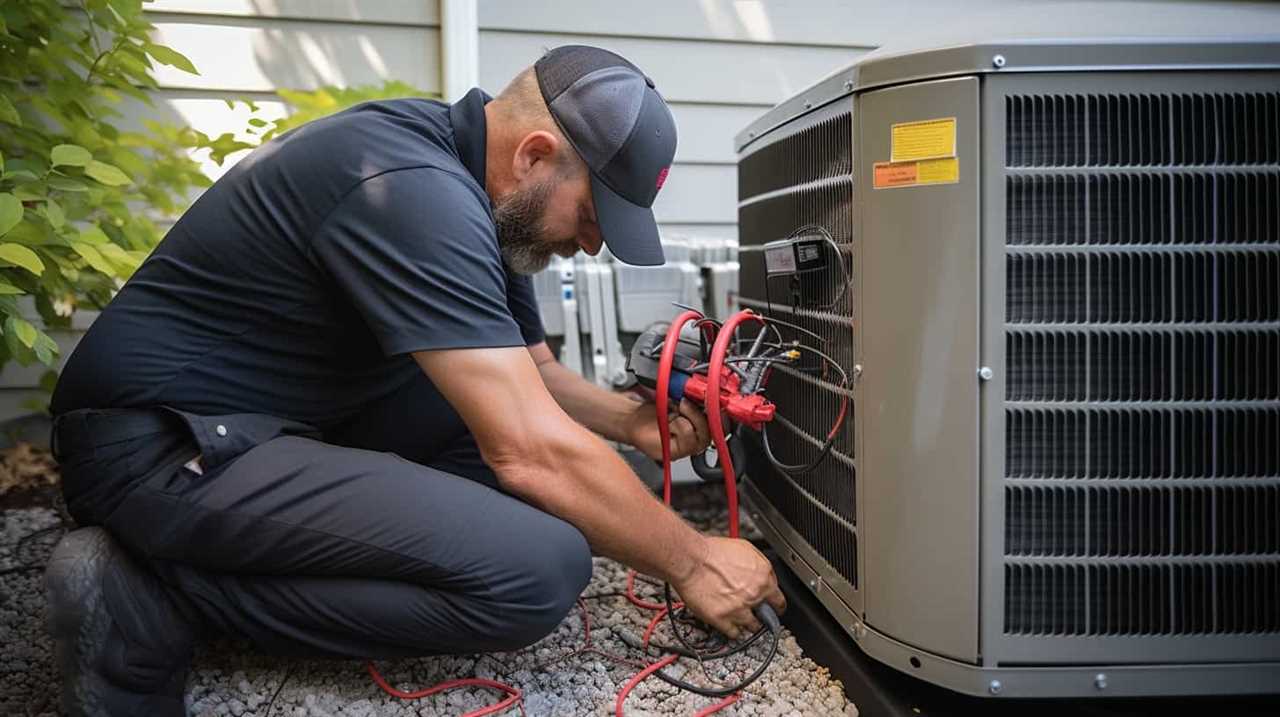
Supplementing With Solar Power
One effective way to boost our heat pump’s energy efficiency is by supplementing it with solar power. By installing solar panels on our property, we can harness the power of the sun to generate electricity, reducing our reliance on the grid.
Here are four benefits of supplementing our heat pump with solar power:
-
Lower energy costs: Solar power can help us save money on our electricity bills by offsetting the energy consumed by our heat pump.
-
Environmentally friendly: Solar power is a clean and renewable energy source, reducing our carbon footprint and helping combat climate change.
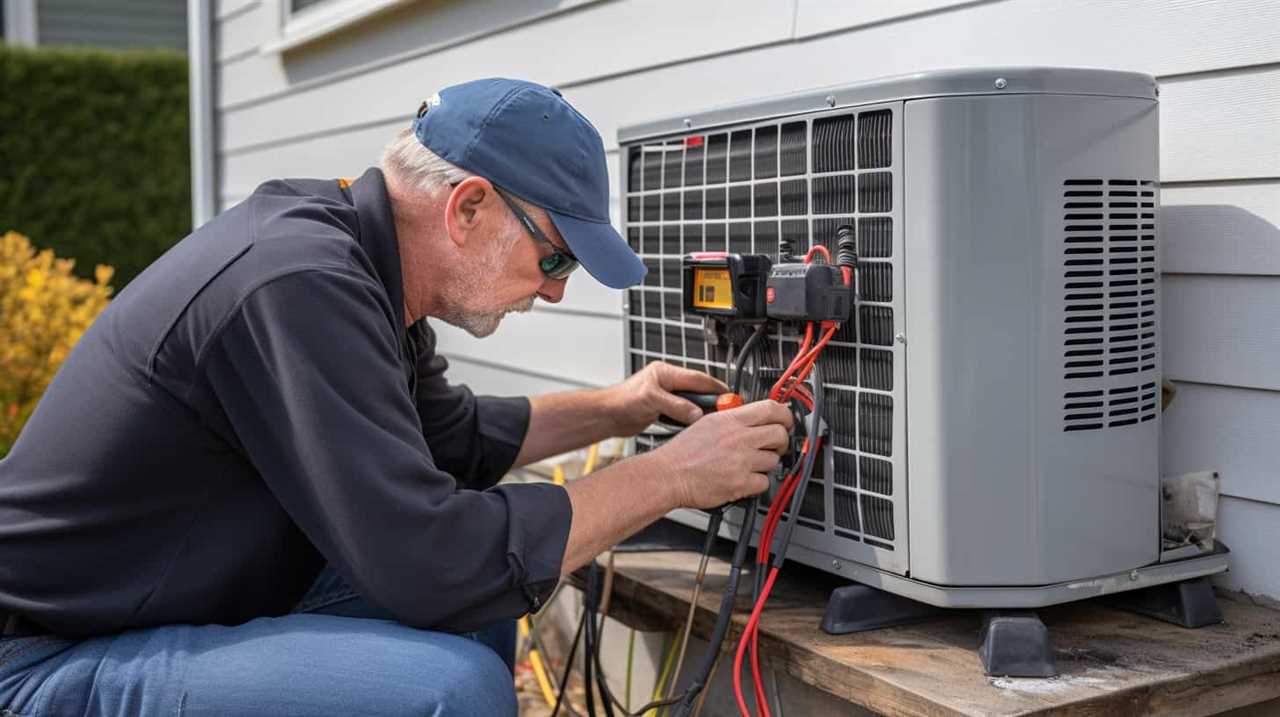
-
Net metering benefits: With solar panel installation, we can take advantage of net metering programs, where excess energy generated by the panels can be fed back into the grid, earning us credits or monetary compensation.
-
Increased energy independence: By generating our own electricity through solar power, we become less dependent on the grid, ensuring a more reliable and resilient energy source for our heat pump.
Supplementing our heat pump with solar power not only enhances its energy efficiency but also brings numerous benefits to our wallet and the environment.
Frequently Asked Questions
How Can I Determine the Optimal Temperature Settings for My Heat Pump?
We determine the optimal temperature settings for our heat pump by considering the optimal temperature range and the factors that affect temperature settings. It’s important to find the balance for maximum energy efficiency.
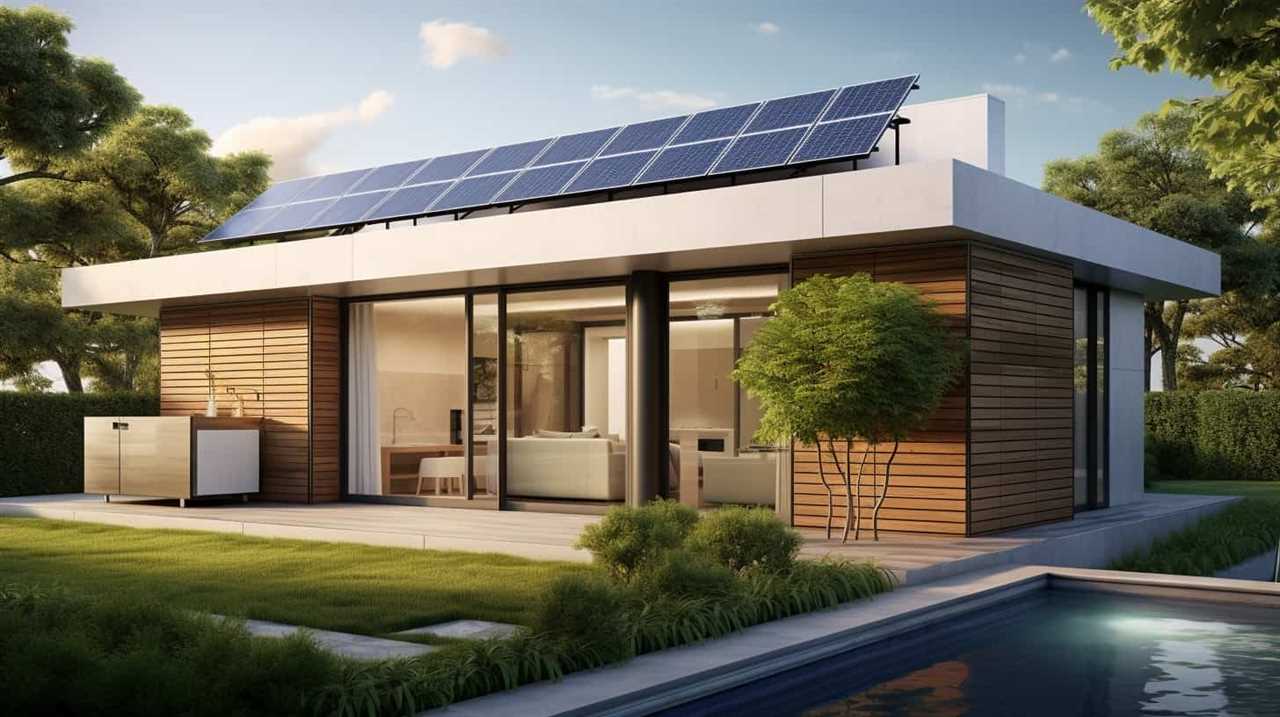
What Are Some Common Maintenance Tasks I Should Perform Regularly to Ensure My Heat Pump’s Energy Efficiency?
Regular maintenance is key to keeping our heat pump energy efficient. We should clean or replace filters, check for leaks, and schedule professional maintenance. These simple tasks will ensure our pump runs smoothly and saves energy.
Are There Any Specific Types of Insulation That Are More Effective in Improving the Energy Efficiency of a Heat Pump?
There are several types of insulation that can be more effective in improving the energy efficiency of a heat pump. These include materials such as spray foam, cellulose, and fiberglass.
How Do Programmable Thermostats Help in Maximizing the Energy Efficiency of a Heat Pump?
Programmable thermostats optimize heat pump efficiency by allowing us to schedule temperature changes based on our needs. This reduces energy consumption by adjusting the temperature when we’re away or asleep, resulting in significant energy savings.
What Are the Key Factors to Consider When Deciding to Supplement a Heat Pump With Solar Power?
When deciding to supplement a heat pump with solar power, key factors to consider are the integration of solar panels with the heat pump system and the potential energy savings that can be achieved.

Conclusion
In conclusion, implementing these techniques can significantly improve the energy efficiency of your heat pump. Studies have shown that optimizing temperature settings alone can result in energy savings of up to 15%.
Regular maintenance and cleaning can increase the efficiency by another 5%. By insulating your home, you can reduce heat loss and further enhance energy savings.
Utilizing programmable thermostats can save an additional 10%, while supplementing your heat pump with solar power can lead to even greater energy efficiency gains.







